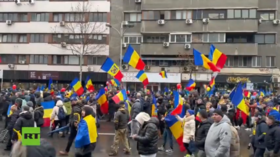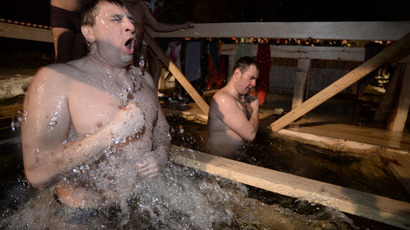Party like a Russian (peasant): Christmas festival mixes Orthodox and pagan rites

Despite Christianity’s attempts to sanitize it, Russia’s midwinter festival, Svyatki, is the most anarchic, mystical and obscene pagan extravaganza you’ve never been to. Is it too late to join in?
Svyatki (translated as Holy Days) gets underway on Christmas Day – January 7 according to the lagging Julian Calendar used by the Orthodox Church, and ends on Epiphany on January 19 – but almost none of what happens in between can be found anywhere in the Bible.
Goodbye to the dead
The duration of Svyatki, 12 days, exactly matches the pre-Christian Kolyada festival – or Yule celebrated by other European pagans – though both of those holidays took the Winter Solstice as their starting date. For agricultural societies, the lengthening of the week days marked a natural moment to demarcate the turn of the year, commencing the march towards the next planting season. And the severe weather offered more spare time for frivolities – work was frowned upon during Svyatki.
The fortnight gave peasants a window to say farewell to the dead, as they descended with an assortment of demons – including female creatures, bodies covered head-to-toe in hair, who would dig their grotesquely long nails into the flesh of victims they met in the woods, tearing it out in chunks. During formal meals, tables would be set and food prepared for the departed. Pyres would be kept burning outside the house so the locked-out spirits could stay warm. Symbolically, discarded objects and rubbish from the past year fuelled the bonfires and lit on January 14.
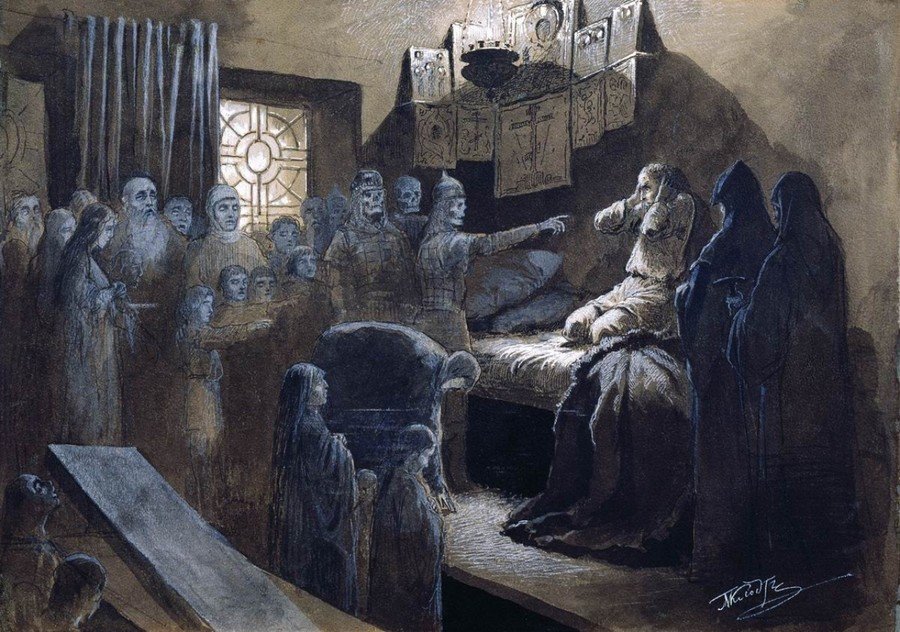
Death also played a prominent part in the rituals, with villagers dressing up as the Grim Reaper – sometimes with one man sitting on the shoulders of another – to induce an atmosphere of the uncanny and the grotesque. In another custom, a young man wore the clothes of the dead, or those items of clothing older peasants planned to be buried in, and laid in a coffin before being ferried around the neighborhood in a sleigh. Combining Svyatki’s accompanying obsession with sex, in the profane reenactment of a funeral young women would often be forced to kiss the “corpse” who would "rise" and poke them in return.
The twin themes of costumes and the otherworldly give the festival a certain affinity with Halloween. Its defining image is a band of men clad in animal disguises or symbolic archetypes, such as “ancestor” or “stranger” – often elaborately prepared weeks in advance – making ritual visits to houses. Somewhere between trick or treaters and carol singers – another legacy of pre-Christian culture – these groups would burst into homes, though, usually, only those that indicated their willingness with a candle placed at the window, and perform songs and mummers’ plays.
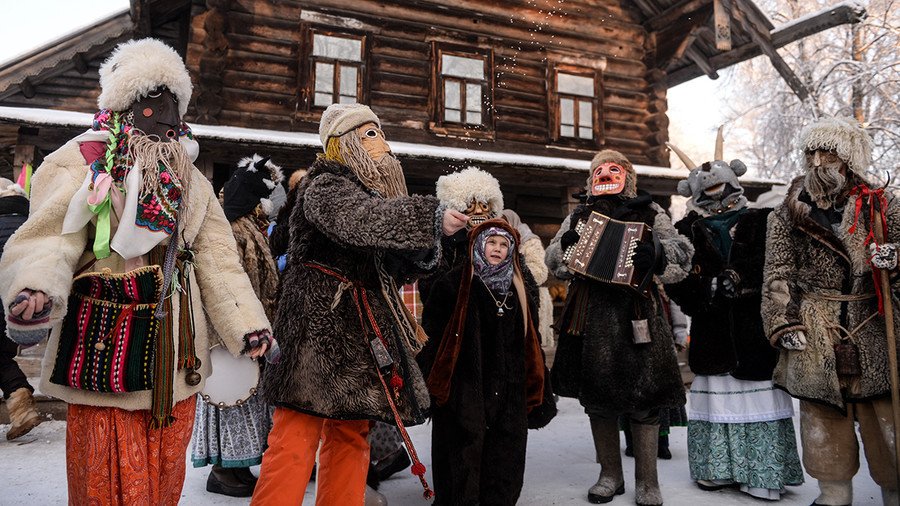
Those that refused to open their doors could be subjected to a less welcome intrusion – perhaps cold water poured down the chimney – or even a home invasion, in which the human beasts would trash their possessions, and sometimes take valuables (though it was considered good form to spend all that was taken on drinks before Epiphany.) Channeling evil spirits, pranksters would also hide sleighs in the forest, scatter wood piles, and spray liquefied manure on that cantankerous farmer next door. Stories of vengeful beatings of those caught are plentiful.
In fact, sanctioned transgression is a central tenet of Svyatki. The festival encouraged people, emboldened by their masks of folk gods, to traverse beyond their ordinary personalities and roles, breaking down social boundaries of wealth, profession, and even gender, with many customs during the festival involving cross-dressing.
Amidst the chaos and morbidity, the theme of renewal is equally essential throughout the fortnight, which transitions by design from the earthy intensity of the first week, to the pure lightness of the second. During most of the carol singers’ visits, they would declaim long and specific wishes to fellow villagers, and often the poorest members of the community would be blessed with the most attention and lavish performances.
Hello to new husband
The widespread practice of fortune telling is the best-preserved present-day Svyatki tradition. For women, who gathered in groups at night to indulge in the practice, the divination was almost invariably focused on the identity of a future husband. The rituals themselves varied from the laughably transparent – asking a stranger his name, which (perhaps not coincidentally), would also be the name of the future husband; to the obscure – hoping to read signs in dried candle wax; to the mystical – the chosen man was to appear in the mirror behind the unmarried girl on the stroke of midnight.
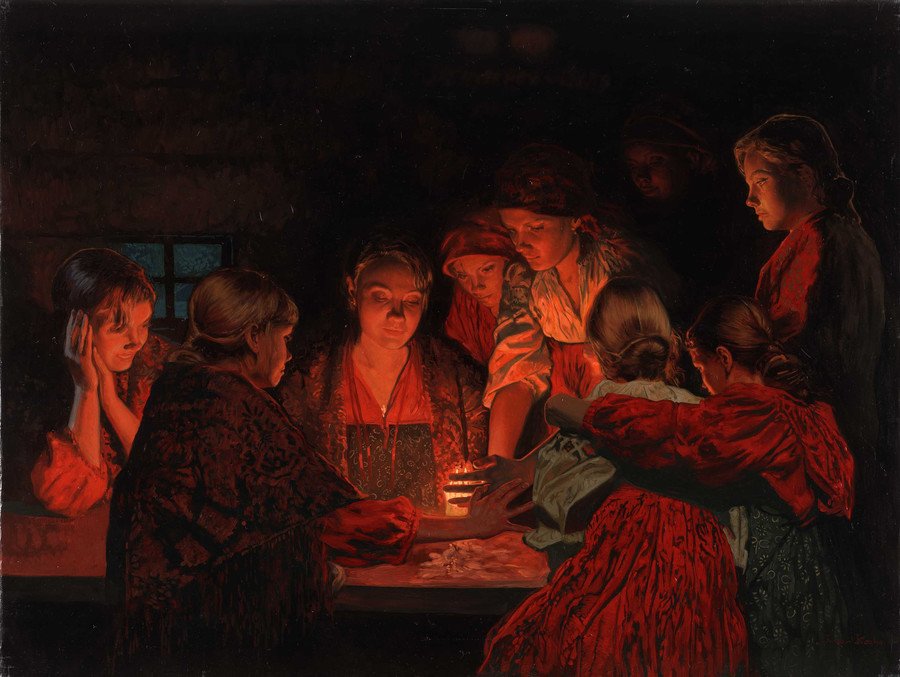
In fact, romance and sexuality are the life force of Svyatki, which is described even in historical accounts as a young people’s festival, and its texture is of thrill, uncertainty and terror.
At their tamest, Svyatki served as a peasant debutante season, where boys would outdo each other to impress a pack of watching girls – either directly or through testosterone-fueled feats such as mass fist fighting – as the parents looked on.
But often, a house would be rented out by the young for a few roubles or days of field work from an old widow for the duration of the festival, in which drinking, gambling and much more decadent contact went on unabated. While these acts were underplayed by officially prudish Soviet researchers, many of the “night games” were explicitly sexual – women would get on their knees as “market horses” to be petted and kissed by the “buying farmer,” or a man’s penis would be portrayed as a “boundary post” that has “fallen down and needs to be raised back up.”
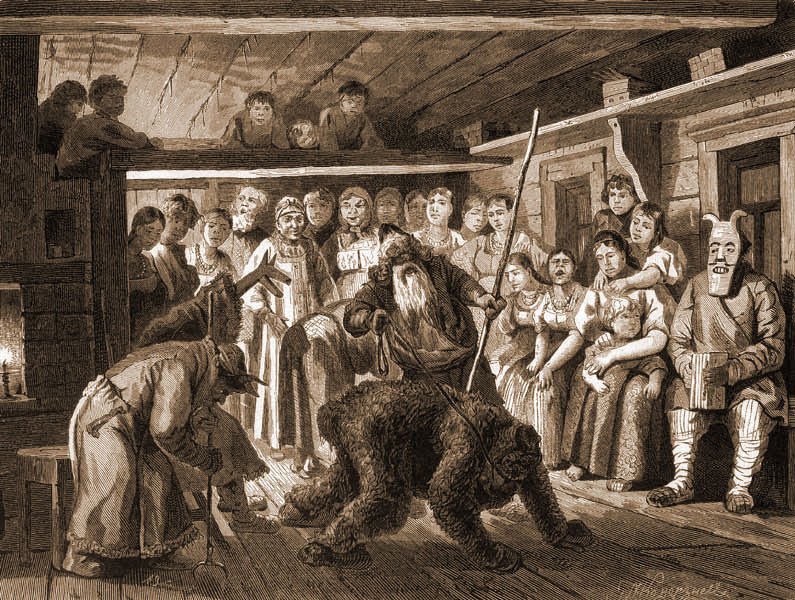
An undercurrent of coercion and violence runs through many of the documented amusements. Young girls were egged on to demonstrate their sexual maturity and readiness for marriage by participating in the bawdy games, and sometimes appeared to have no choice at all, with reports that the masked men would hold down the “participants” or block entryways. Several of the rituals, such as making a woman show how sex is performed with a "bear," let herself be felt up to demonstrate that “there is no hollow in this tree trunk,” or be subjected to a mock trial for being a “whore” constituted public shaming or assault.
Have church & state tamed Svyatki?
Unsurprisingly, the Orthodox Church could not do with such unbridled conduct during its most significant time of the year, and darted between banning and reinterpreting the thick brew of existing rituals.
There is no way that fortune telling and gambling could be justified by the words of Jesus, so those were officially prohibited. Baptisms and marriages were also forbidden, though the latter decree seems to have been in the interest of avoiding drunken shotgun weddings and recriminations, and the folk saying went: “Only wolves get hitched during Svyatki.”
Yet it also tried to add religious content to the carol singers’ songs and blessings, and dilute their zoological imagery with Stars of David, crosses and other religious symbols. The practice of swimming in freezing water to drown the spirits of the dead at the end of the festival, was remixed into a celebration of Baptism for Epiphany that is performed annually by tens of thousands of Russians to this day. The church also tried to play up the domestic rituals of Svyatki – the solemn mealtimes with the family indoors, instead of the light-hearted cavorting outside.
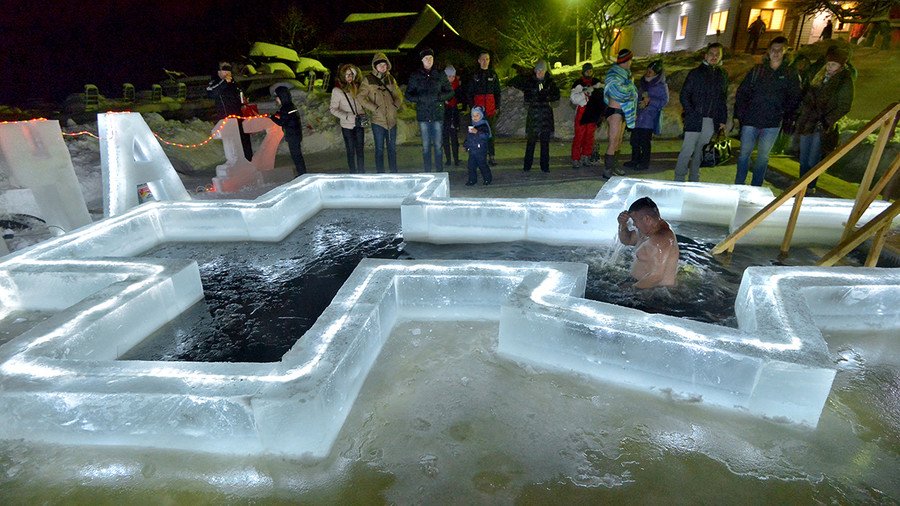
But it was as much industry-driven urbanization as organized religion that led to the widespread decline of many such traditions by the end of the 19th century. The agricultural and seasonal rhythms and impulses exerted a weaker pull, while the shared rituals and trust required to make such a rambunctious festival function safely were no longer in place.
The Soviet Union brought in and codified its own set of traditions – New Year instead of Christmas, mayonnaise-heavy salads, a handful of comedies on TV – while previous customs were either discouraged or banned altogether. Marxism’s earnest and centralized ideology was also anathema to pagan individualism and localism.
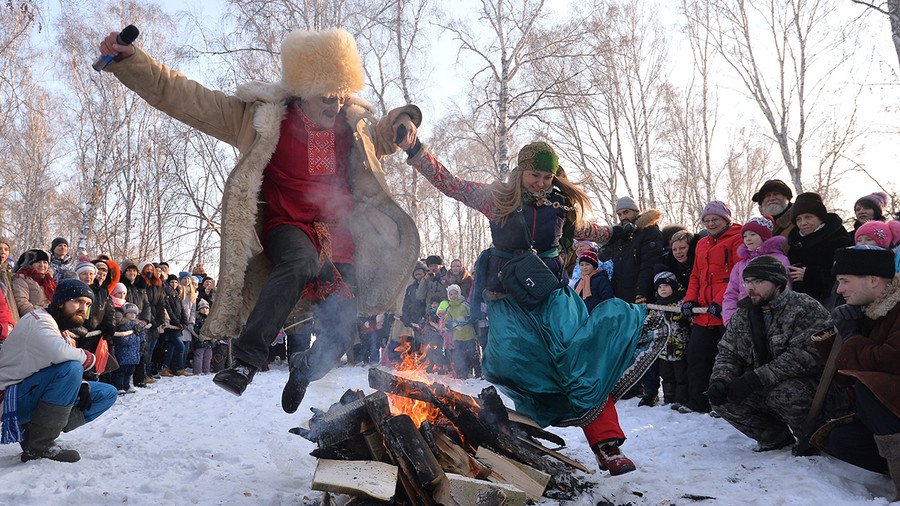
Attempts to revive Svyatki since the break-up of the USSR come across as either decorative or self-conscious. Stripped of its context and vitality, professional actors in wolf masks singing in public squares, is just adults playing dress-up for the sake of children’s light entertainment, often paid for by local authorities. Meanwhile, city dwellers decamping to the countryside for a week in January to wear thirteenth-century embroidered kosovorotkas, deserve respect for their commitment, but look faintly ridiculous and try-hard to outsiders. Folk revivals are never going to be more than niche.
But for all that, the spirit of Svyatki is not dead. Russians may have gone through a handful of head-spinning transformations in the past two centuries to take them to civilization and back, but any outsider who has seen them partying in a club, drinking vodka in a sauna, or launching industrial-strength fireworks outside their apartment blocks in mid-January can testify that at least a part of their pagan spirit lives on. And you don’t need a mask to take part.
Igor Ogorodnev for RT








